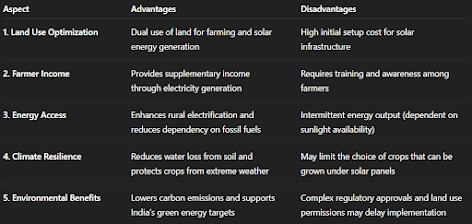Agri voltaics & Renewable Energy Integration
India's agricultural sector, employing over 42% of the population, stands at the crossroads of tradition and transformation. As the country pushes towards its ambitious target of 500 GW of non-fossil fuel energy by 2030, innovative solutions like agri voltaics—which merges solar power generation with crop cultivation—are redefining rural landscapes. This synergy not only helps meet India’s green energy goals but also empowers over 120 million farmers with sustainable income, improved land use, and climate resilience.
What is Agri voltaics ?
Agrivoltaics, also known as agri-voltaics or solar-farming, is the practice of using the same land area for both agricultural production and solar energy generation. This innovative approach involves installing solar panels on agricultural land, often at a height that allows crops to grow underneath, effectively combining food production with clean energy generation.
AgriPV around the World
Global Agri voltaics (AgriPV) Market (2024–2031) : The global agri voltaics (AgriPV) market is projected to grow at a CAGR of 8.3%, rising from Rs. 37,588 crore (US$ 4.34 billion) in 2024 to Rs. 65,910 crore (US$ 7.61 billion) by 2031. This growth is primarily fueled by the increasing emphasis on sustainable agriculture and environmental regulations.
- Top AgriPV Companies: Innovators like Ombrea , Sun’Agri, and JA Solar are leading the development of fixed and dynamic panel systems across multiple crop types.
- Regional Insights:North America holds the largest market share (34.3%) in 2024, driven by strong government incentives and AgriPV adoption in California and New York.
- Asia Pacific emerges as the fastest-growing region, led by China’s agri-tech investments and India’s solar-powered rural electrification programs.
- Europe progresses through cross-sector collaborations such as the Soltec–TSE projects in France.
- Latin America & Caribbean (e.g., Brazil and Jamaica) show increasing adoption of Agri PV to address climate-related agricultural challenges.
AgriPV is shaping up to be a vital component of global energy-agriculture integration, supporting both food and energy security.
How Agripv is shaping up in India
Agrivoltaics in India is gaining momentum as a way to combine solar energy generation with agriculture, offering benefits like increased land-use efficiency, crop yield, and water conservation. More than a dozen pilot projects are underway across various states, exploring the viability of integrating solar panels with different crops. The India Agri voltaics Alliance (IAA) plays a crucial role in promoting and standardizing these practices by bringing together stakeholders like farmers, solar developers, and government bodies.
Agripv Pilot projects
India: Several pilot projects are underway in Uttar Pradesh, Maharashtra, and other states to evaluate the potential of AgriPV for various crops like maize, mustard, and vegetables.
Sweden: SolarEdge and the Scania region are collaborating on a pilot project to test AgriPV in Swedish conditions.
France: Sun' Agri has implemented a viticulture agri voltaics project in Piolenc, demonstrating reduced water demand and improved grape quality.
Switzerland:Various pilot projects are underway in Valais and Friborg, focusing on testing solar panels as shading and protective elements for crops like strawberries, raspberries, in greenhouses
Global : CTCN is supporting a multi-country project to evaluate the potential of AgriPV in West and Central Africa
Advantages & Disadvantages of AgriPV and Sustainable Rural Development in IndiaChallenges in implementing Agripv in India
- High Initial Costs: The upfront investment in solar panels, supporting structures, and installation can be a barrier for many farmers.
- Lack of Awareness and Information: Many farmers are unfamiliar with the technology and its potential benefits, leading to hesitation.
- Policy and Regulatory Hurdles: Separate land-use classifications for agriculture and energy can create obstacles for Agri-PV projects.
- Impact on Crop Yields: Solar panels can create shade, potentially affecting crop growth and yields.
- Maintenance and Coordination: Maintaining elevated solar panels and coordinating water management with agricultural practices can be complex.
- Economic Viability: Fluctuations in electricity and crop prices can make it difficult to assess the long-term economic benefits of Agri-PV.
- PM-KUSUM Scheme:This scheme provides subsidies for solar pumps, aiming to increase farmer income, reduce reliance on diesel, and promote energy and water security.
- Financial Incentives:The government offers subsidies and aims to streamline permitting processes to make Agri-PV more attractive to investors.
- Capacity Building and Research:Initiatives are underway to educate farmers about Agri-PV and promote research into optimal designs and crop management practices.
- Streamlining Regulations:Efforts are being made to create clearer policies and regulations for Agri-PV projects.
- Promoting Innovation:Research is being encouraged to develop more efficient and adaptable solar panel technologies for Agri-PV systems.


Comments
Post a Comment